Sensei Bios

Sensei Art Adamson
Sensei Art Adamson has been involved in the martial arts since 1964 when he joined the Birmingham City Police Judo Club, in England. At that time he was a Police Cadet and he utilized judo as the physical aspect for the Duke of Edinburgh’s Silver Award. He continued to practice for two years and during that time was also involved in boxing. In 1969 he got the urge to wander and in January 1970 immigrated to Canada where he joined the Edmonton City Police. In 1972 he was involved in the inception of the Edmonton Police Kung-Fu Club, Shou-lin Style, and practiced for two years.
In 1977 another club was organized within the Police Service and was called the Edmonton Police Go-Ju Kai Karate Club. Sensei Takeshi Uchiage, Japanese Karate Federation (JKF), headed this club. Sensei Art was able to practice this style four times a week and grow, learning from Sensei Uchiage. Sensei Art credits Sensei Uchiage with inspiring him to work hard. It had been Sensei Art’s intent to obtain a black belt and them move on but when it was presented to him in 1980, he realized there was more to karate than a belt. This was further instilled in him by Grand Master Uchiage Kenzo, under who’s eye Sensei Art was instructed often. As well as other “Weapons” Masters in Japan. He moved forward and finds himself still trying to learn and improve today.
Sensei Takeshi Uchiage decided to return to his head dojo in Vancouver (1984) and at that time Sensei Eden Hampson and Sensei Art Adamson decided to keep the style alive in the communities. Sensei Art and Eden both taught in Edmonton and Sensei Art also started a club out in Sherwood Park in the same year.
The Sherwood Park Club was called Trinity Go-Ju Kai Karate club and operated out of the Trinity Baptist Church. See the ‘ History’ of the clubs on this web site.
It has been his intention to ensure the karate club continues to be a growing establishment.

Sensei Jim Cheng
Sensei Jim Cheng has a long interest in martial arts spanning over 40 years. He first acquired a taste for martial arts when he was a teenager growing up Hong Kong in the 1950’s. Judo was introduced into the world from Japan at that time. He started practicing Judo on the traditional straw mats. His Judo training was interrupted when he went to Australia for schooling. While he was there, he found himself unable to compete with the sport oriented Australian boys since he did not learn the skill while he was growing up. He and his brother joined a local boys club and they had a wrestling club coached by an ex Hungarian Olympic wrestler who defected during the Melbourne Olympic game in 1956. Jim learned to do wrestling at that time. After 2 years of wrestling, this was abruptly stopped as he moved and no was longer close to the Boys’ Club. At the same time, the school he was attending started a fencing club. Fencing became his passion for the next 8 years while he completed his schooling and throughout his university days. He entered the Victoria State Junior tournament and fenced on behalf for the University of Melbourne. After completion of his medical degree, he came to Toronto to do his post-graduate training. The demand of post graduate medical training and subsequent posting in southern Ontario and Northwest Territories did not allow him continue fencing. When he returned to University of Toronto in 1976, he returned to fencing and captained the university team to clench the championship cup in 1978. When he came to Edmonton in 1978, his interest in Martial arts lay dormant until 1984 when Sensei Art casually asked whether he would be interested in shooting or karate. He started in Karate under Sensei Art Adamson and Sensei Eden Hampson since that time and continues to learn and practice. He thinks Go-ju is the right style for him because of its simplicity and the basic principles of minimal movement as compared with other styles. Beside training for himself, he likes to transfer his knowledge of Go-ju to the incoming students.
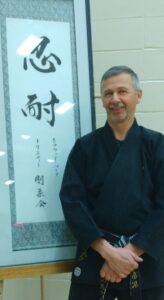
Sensei Trevor Dymchuk
Trevor Dymchuk’s training in martial arts began in Tae Kwon Do. It was his first attempt at any type of sport, in poor shape no balance or coordination he had lots going for him. That lasted a couple years and the club closed down. After a few months his neighbor found a place he might be interested in. That was January 1990. As you can see, he is now a sensei. It’s an honour not many experience. The many hundreds of students he has worked with over these years all played a part in helping him stay the course. His greatest influences however have always been the senseis above him who at any moment during his training were always willing to stop what they were doing to teach him something new.
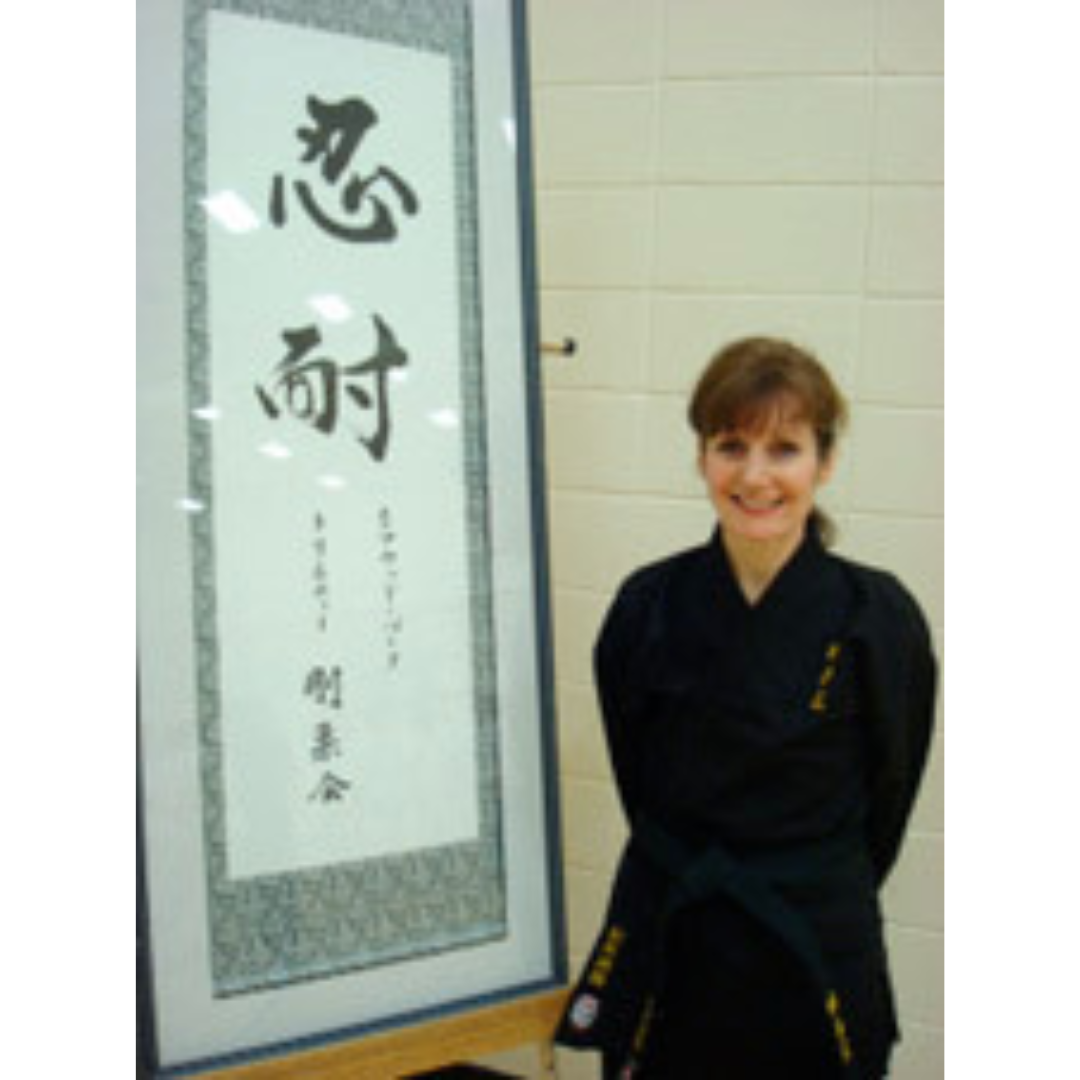
Sensei Lynne Fisher
As a Trinity sensei, having attained her 5th Dan in August, 2024, Lynne Fisher’s initial introduction to the martial arts could best be termed ‘kicking and screaming’.
At their request, she reluctantly brought her children to the club in 1996 with the intent of registering them in the club and watching them progress. During that first class spent watching, she was intrigued by the balance between disciplined training and the positive and jovial atmosphere of the club, and was persuaded to join in. And, from that first class, her passion for Go-Ju, and the club has only amplified each year and each class. Today, as with many martial artists, karate has become a principal cornerstone in her life
She feels particularly honoured to have been trained by Sensei Art Adamson, Sensei Glenn Iriye, and the four other sensei who came before her, and considers her karate to include a harmonious blend of the lessons learned from each of them.
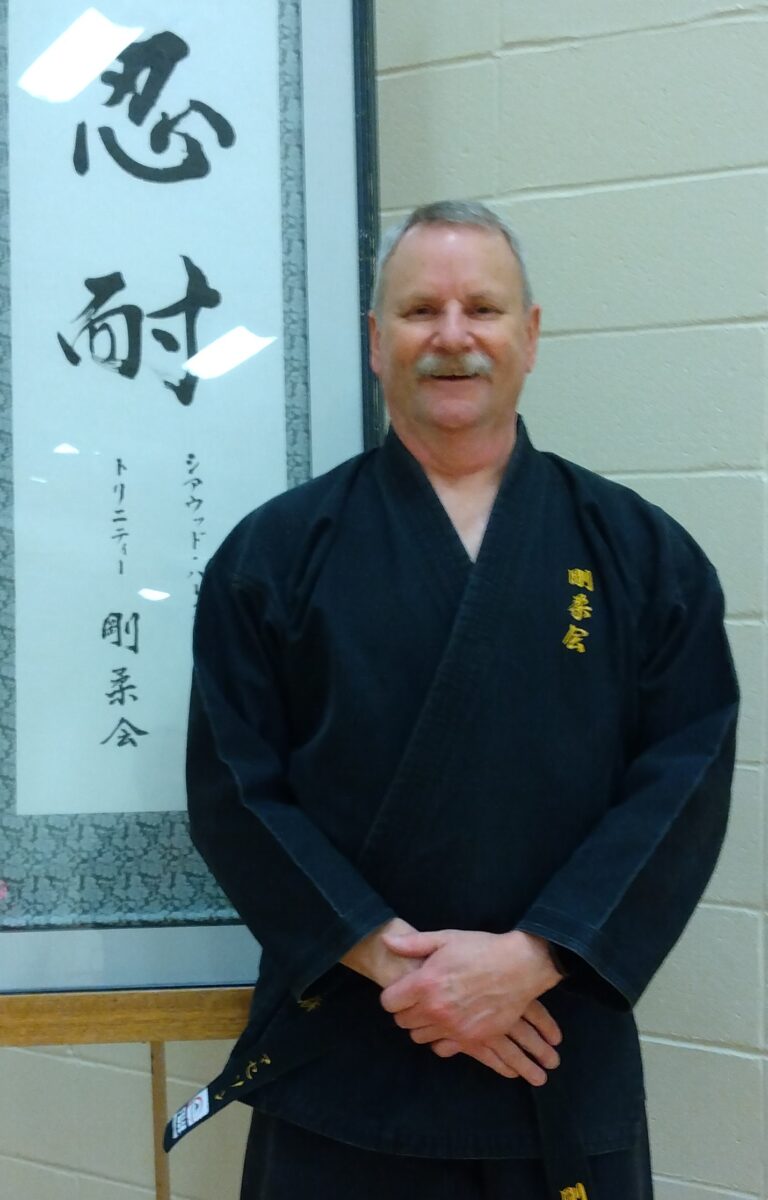
Sensei Bruce Matheson
Bruce’s first exposure to martial arts came while watching Bruce Lee’s character, Kato in the 1960’s TV show “The Green Hornet”. In 1970 he started taking Judo classes at the local YMCA in Calgary. His exploration in the martial arts after this starting point included trials in Tai Chi, Shotokan karate and Kung Fu, Tae Kwon Do and Chito ryu karate.
Bruce started with Trinity Go-Ju Kai Karate Club in 2002 with his daughter. The instructors and students provided a welcoming social and learning setting, with many learned lessons and many friends made over the years. Bruce was a gold medal recipient for Karate Kata at the Can-Am Police Fire Games in 2008.
Bruce appreciates the significance of the club’s maxim “Perseverance”, which is written on a Japanese scroll and displayed during each class. It was through perseverance that Bruce was awarded 4th-Dan in December, 2023 and continues to learn.
“Do not strike others; do not allow others to strike you. The goal is peace without incident.” – Chojun Miyagi Sensei
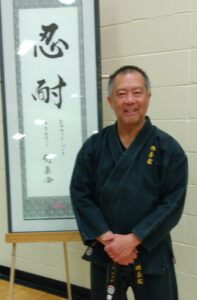
Sensei Jay Atienza
After a break-in at their home in 2000, Jay decided to join the club along with his wife and daughter. Since then, there hasn’t been a break-in at their home. But because they also got a large “fierce” dog and a security system, he’s not so sure this was because of his training. Still, he finds his training to be very beneficial in many ways and continues to enjoy and grow his Goju skills and knowledge. Since becoming a sensei in 2016, he has found teaching to be rewarding and fulfilling even with all its challenges. He believes in teaching Goju primarily as a high-intensity, demanding sport where you compete against your previous level and where progress and learning are continual and lifelong. Along the way you just find health, strength, peace, fun and family.
Retired Senseis
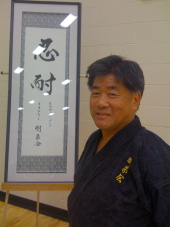
Sensei Glenn Iriye
Most notably, Sensei Glenn is the “nice” sensei. He continues to refine his martial arts skills in Go-Ju, kobudo (traditional martial arts weapons), & kendo (Japanese fencing). His affiliation with Go-Ju karate began with Uchiage Sensei in July, 1979 at the old police headquarters on Sir Winston Churchill Square. Since that time he has organized or participated in numerous Go-Ju clubs in the Greater Edmonton Region. He is a meticulous practitioner of Go-Ju and his guidance of Trinity Go-Ju Kai helps to maintain a rigorous, positive atmosphere. He is also able to bring to the club, an historical perspective of Go-Ju in the region.
In 1985, Sensei Iriye accompanied Sensei Uchiage to Japan for training. Besides meeting and training with various martial artists from a wide variety of styles and backgrounds, Sensei Iriye participated in the
week-long Tenri University Karate Seminar and Tournament. Sensei Glenn attributes his being able to live through this ordeal to an intensive year-long training regimen Sensei Eden & Sensei Art arranged for him prior to his traveling to Japan. The specialized training provided him that summer continues to guide his practice of Go-Ju karate.
In the early to mid-1990’s, some younger Trinity Go-Ju Kai students could not attend classes in Sherwood Park during the week, so Sensei Glenn opened his home to extend additional training nights to them. This arrangement evolved into the establishment of the Laurier Heights Trinity Go-Ju Kai club in the west-end of Edmonton in August of 2004.
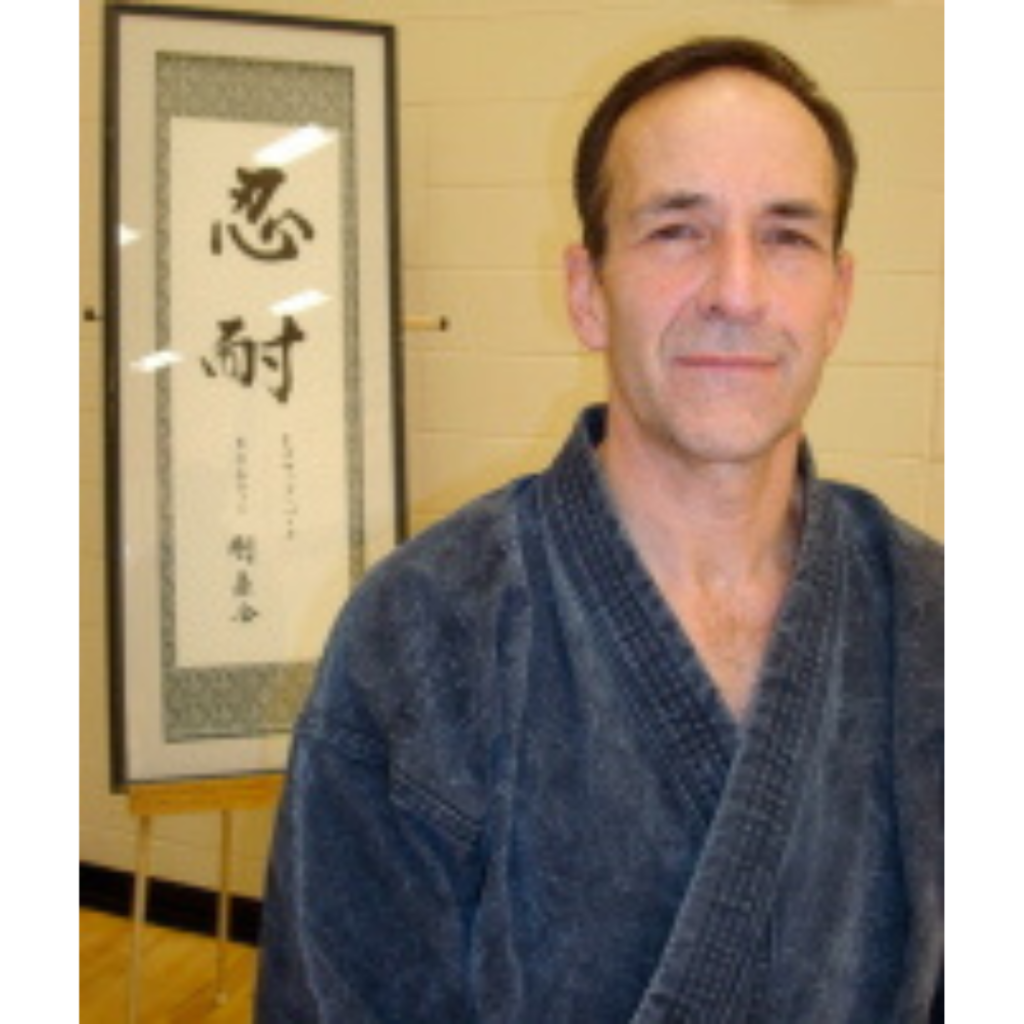
Sensei Jim Kennedy
Jim Kennedy’s first introduction to martial arts training began at age 11 with a few classes of judo at his community league. Jim and two of his daughters started to practice with the Trinity Go-Ju Karate Club in 1992 training under Sensei Art Adamson and Sensei Glenn Iriye. He supplemented his training on occasion with the Edmonton Goju-Kai Karate Club. Jim attained his 5th Dan in December 2012.
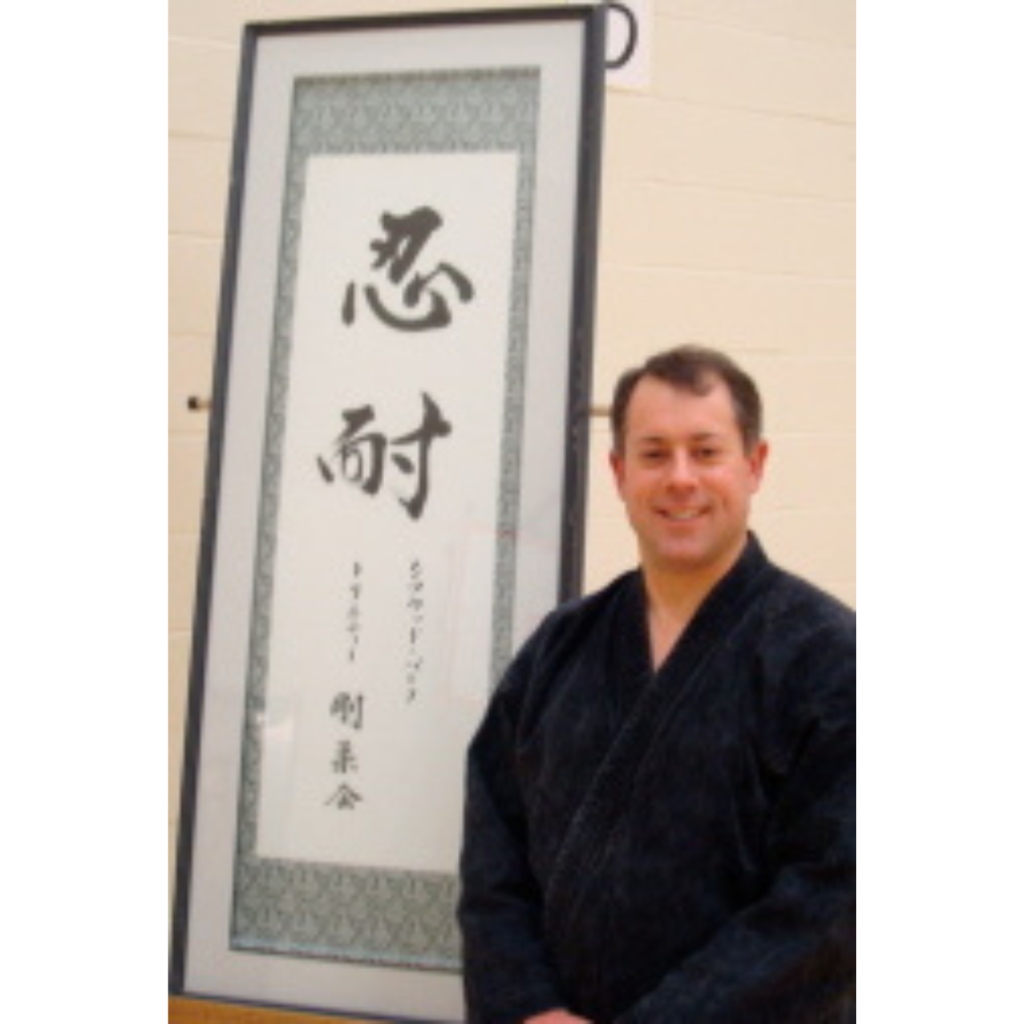
Sensei Sean Polglase
Sean Polglase began his martial arts training with the Trinity Go-ju Kai Karate Club in 1989. He has also enjoyed training in Aikido and Kendo. Sean received his 3 rd Dan in Dec 2000 .
